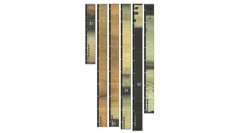

 Comptes Rendus Palevol
5 (1-2) - Pages 57-64
Comptes Rendus Palevol
5 (1-2) - Pages 57-64One peculiar feature of the Mediterranean Sea is the existence of numerous layers of dark pelagic sediments, rich in organic carbon, known as sapropels. They occurred during warm climatic periods as well as during cold and transitional periods since 7 Ma, and similar deposits were recognised from tectonically uplifted marine cliffs since 25 Ma. They attest brief periods of bottom water anoxia, attributed to a decrease in the Mediterranean Sea surface density and consequently a reduction of the Mediterranean Sea overturning. Such a decrease may be related either to huge floods of the Nile related to the intensity of the African monsoon or to a change of the precipitation–evaporation budget over the Mediterranean region. As precisely dated by orbital tuning, these events permit the attainment of a global time-scale of the geological record for the Late Neogene.
Mediterranean Sea, Sapropels, African monsoon, hydrological cycle